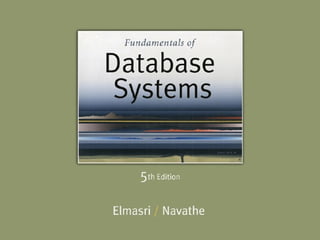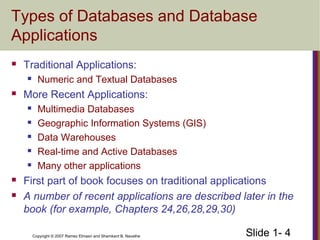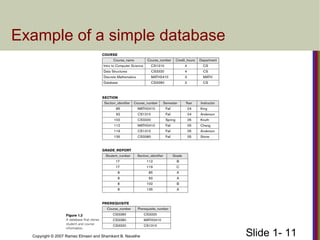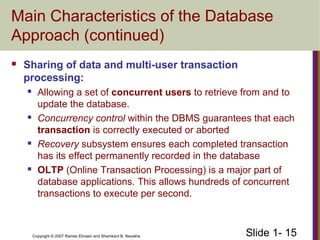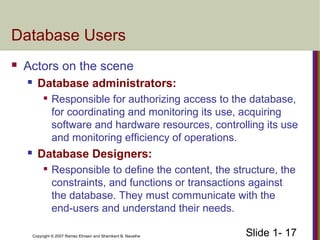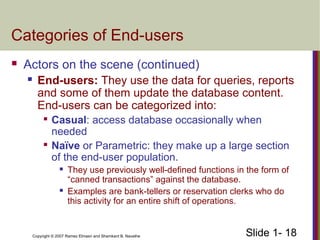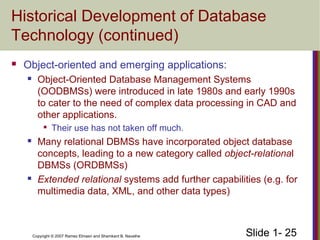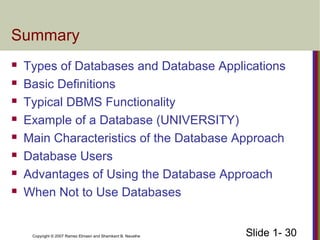This document introduces databases and database management systems. It discusses different types of databases and applications, provides basic definitions, and outlines typical DBMS functionality like defining and manipulating database contents. It presents an example university database and describes key characteristics of the database approach such as self-description, insulation between programs and data, and supporting multiple views. It also discusses different types of database users and the advantages of using a database approach, as well as situations when a DBMS may not be necessary.
